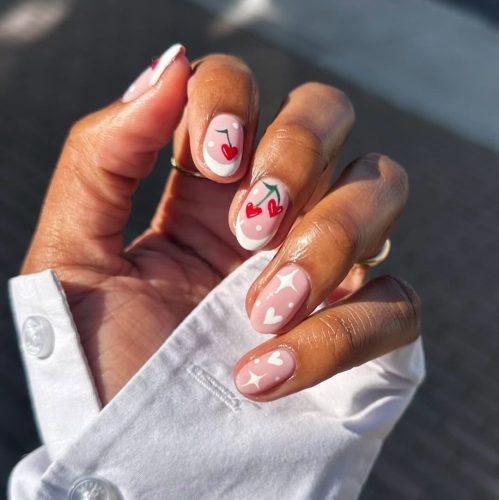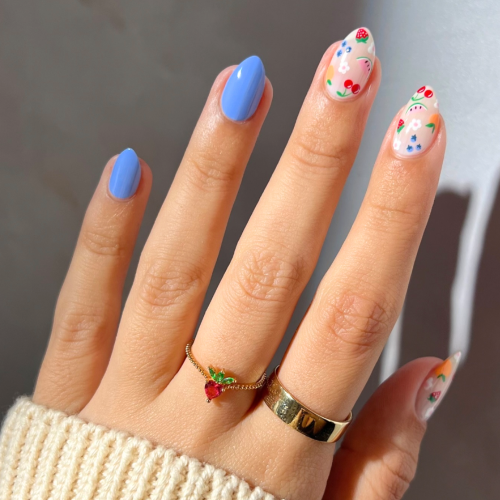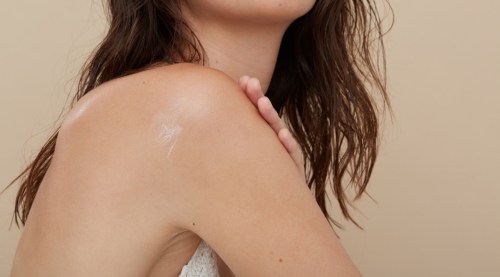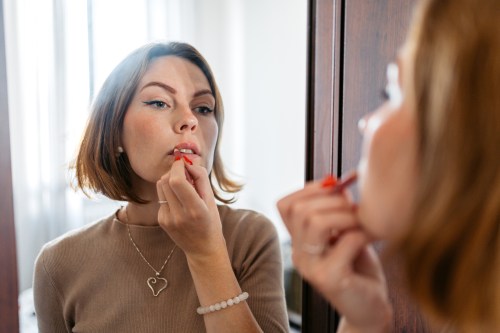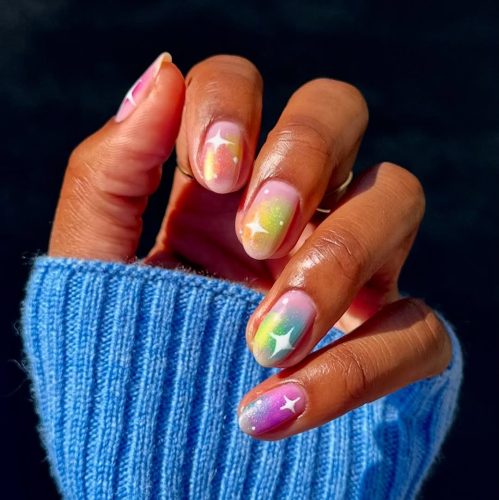Retinol goes by roughly 1 bajillion different terms, here’s what they all mean
Two dermatologists explain what are retinoids and what all of the vitamin A derivatives mean, plus how to decipher them on a beauty product label.

As a beauty editor, I can confidently navigate a beauty product label. I can tell my sodium lauryl sulfate from my cocamidopropyl betaine (both make you cleaner FWIW), and I can decipher when a Latin term indicates a natural botanical, but I will admit that my knowledge blurs when it comes to retinol.
I mean, the stuff is referred to by using a lot of different terms, and what’s more, they’re not all the same thing: some are prescription-strength formulas (of which there are many) and some are OTCs (of which there are many more). And since vitamin A (the umbrella term for all of these) gets name checked by skin pros on the daily, I wanted to clear up the matter at hand. “All retinol products are derivatives of vitamin A and are called retinoids,” says Gary Goldenberg, MD, a board-certified dermatologist at Goldenberg Dermatology.
Beyond that, however, the vocabulary you need to know your retinol from your Retin-A can be confusing, so keep on scrolling for what to know about the buzzy skin-care ingredient.
How to tell retinoids apart
Over-the-counter retinols: Retinoids are responsible for amping up cellular turnover in skin and they also help to stimulate collagen, which leads to the youthful, clearer-skin that everyone knows and loves. “Most people talk about retinol with respect to its anti-aging benefits,” says Joshua Zeichner, MD, a New York-based dermatologist.”Over the counter, there are 3 different types of retinoids available: retinol, retinaldehyde, and retinyl esters.”
Now, it’s important to note that vitamin A is a notoriously unstable ingredient that’s photosensitive and traditionally hasn’t played nicely with other ingredients, which is why different forms are frequently tapped for different formulas. “Of the three, retinyl esters are the most stable, but also the weakest because they need to go through two steps to be converted to its active form in the skin,” explains Dr. Zeichner. “Retinol, on the other hand, goes through one step of conversion to active retinoic acid in the skin. And retinaldehyde is directly converted into retinoic acid on the skin.”
These derivatives are pretty clear to read when looking at the product label—they’ll be retinol, retinaldehyde or retinal (synonymous terms), and then retinyl esters show up as retinyl proprionate or another retinyl ingredient, says Dr. Zeichner. Reach for retinyl esters if you’re sensitive and retinol or retinaldehyde if your skin is able to handle the ingredient.
Prescription-strength retinoids: Next up: Rx-strength retinoids, which come in four different forms: tretinoin, adapalene, tazarotene, and the newly introduced trifarotene. The most common one that you’ll usually hear about is tretinoin. “The prescription retinoid ingredient, tretinoin, is also known as all-trans retinoic acid,” he says. “This is the active ingredient, so it doesn’t require any conversion after application on the skin, which explains why the prescription versions are more potent than what’s available over-the-counter.” That means that tretinoin is straight-up retinoic acid, so there’s zero conversion process that has to happen in skin, making it super potent.
“Topical retinoids, when applied to the skin, are actually converted to tretinoin,” explains Dr. Zeichner. “So the biological effect of the over-the-counter ingredients in the end is really tretinoin.” While there are a surplus of brands like Refissa and Tretin-X, that bring tretinoin to derm’s office, the one that gets tossed around a lot is Retin-A. That’s just because it’s “a brand name of tretinoin, and tretinoin is the generic,” says Dr. Goldenberg.
While you used to have to go through a dermatologist to lay hands on the adapalene-laced Differin gel, it now is available without a prescription, and it along with tazarotene are targeted specifically for those with acne, helping to speed up cell turnover for a shortened life of zits. Meanwhile, fourth-gen trifarotene has shown promising results in initial studies for reducing inflammation and hyperpigmentation by doing the same thing.
As formulas get smarter, less irritating, and more targeted, it’s still important to remember that if you use any form of vitamin A, you’re in good shape, so long as the effects aren’t too strong on skin. “While the chemical formula may be the same, the products may vary in tolerability,” says Dr. Goldenberg. “In general, branded products feel better on your skin since they’re typically made with higher quality ingredients—though in the end they work very similarly.” So it may not be a tomato-to-mah-to situation, but so long as you’re working with a formula that feels good on skin, you’ll reap the A+ benefits.
Other star skin-care ingredients include hyaluronic acid and the J-beauty star rice water (both of which are super hydrating).
Sign Up for Our Daily Newsletter
Get all the latest in wellness, trends, food, fitness, beauty, and more delivered right to your inbox.
Got it, you've been added to our email list.
